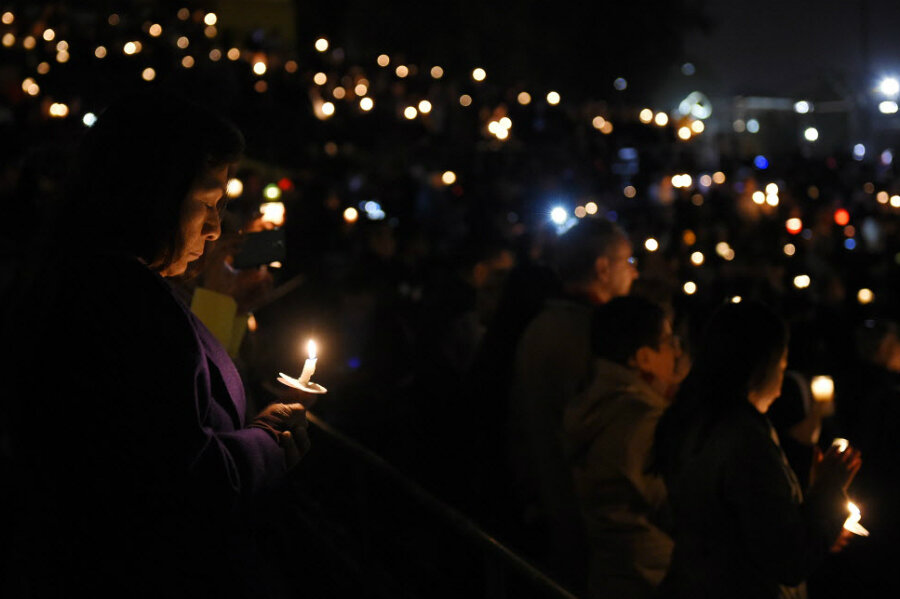America's massive decline in gun violence
Loading...
This week’s mass shooting in San Bernandino, which killed 14 innocents and wounded another 21, seems sadly routine. We’ve had so many of these incidents in recent years that they flow together. And yet, as Max Ehrenfreund notes at the Washington Post, we’ve actually had a “massive decline” in gun violence over the last two decades.
Premeditated mass shootings in public places are happening more often, some researchers say, plunging towns and cities into grief and riveting the attention of a horrified nation. In general, though, fewer Americans are dying as a result of gun violence — a shift that began about two decades ago.
In 1993, there were seven homicides by firearm for every 100,000 Americans, according to a Pew Research Center analysis of data from the Centers for Disease Control and Prevention. By 2013, that figure had fallen by nearly half, to 3.6 — a total of 11,208 firearm homicides. The number of victims of crimes involving guns that did not result in death (such as robberies) declined even more precipitously, from 725 per 100,000 people in 1993 to 175 in 2013.
Older data suggests that gun violence might have been even more widespread previously. The rate of murder and manslaughter excluding negligence reached an apex in 1980, according to the FBI. That year, there were 10.8 willful killings per 100,000 people. Although not a perfect measure of the overall rate of gun violence, the decline in the rate of murder and manslaughter is suggestive: Two in three homicides these days are committed with guns.
This decline in gun violence is part of an overall decline in violent crime. According to the FBI’s data, the national rate of violent crime has decreased 49 percent since its apex in 1991. Even as a certain type of mass shooting is apparently becoming more frequent, America has become a much less violent place.
Ehrenfreund suggests several explanations for the decline, including more cops on the beat, the use of computer data analysis to more effectively target policing, a sharp decline in alcohol consumption, the campaign to remove harmful lead from the environment, and an improved economy. There have also been demographic changes – an older population is less violent.
Regardless, the difference between perception and reality here is stark. Mass shootings of strangers are, quite naturally, scarier and more attention-grabbing than ordinary homicides involving people known to the shooter. They make national news and spark debates over the state of our society and what public policy solutions ought be applied. And, yet, they are a statistically insignificant part of the overall homicide numbers.
The Mother Jones article Ehrenfreund links, published in October 2014, notes that the rate of these mass shootings (defined as “attacks that took place in public, in which the shooter and the victims generally were unrelated and unknown to each other, and in which the shooter murdered four or more people”) has taken a sharp uptick since 2011. But the real news, from a dispassionate point of view, is how rare they are. The researches note that “a public mass shooting occurred on average every 172 days since 1982” but that “every 64 days on average” starting with an incident on Sept. 6, 2011. They estimate the likelihood of this spike occurring by chance at less than one percent. That is, of course, way too many. But it’s a tiny percentage of the overall homicide rate, whether measured in terms of incidents or deaths.
The spectacular nature of the mass shootings makes them natural fodder for public debate. But their rarity and the fact that they’re overwhelmingly committed by the mentally ill make them a poor choice for basing our public policy.
While I own multiple guns, I have no problem with background checks, registration, safety training, closing gun show loopholes, and various other measures offered in the wake of these incidents. They strike me as common sense for a variety of reasons. In combination, they’d make it slightly more difficult for petty criminals to get guns, make it slightly easier for police to investigate shootings after the fact, and help reduce accidental shootings. But they would have essentially no impact on mass shootings, which are rare and unique events.
James Joyner is editor of the Outside the Beltway blog at http://www.outsidethebeltway.com/.







